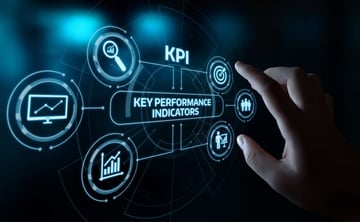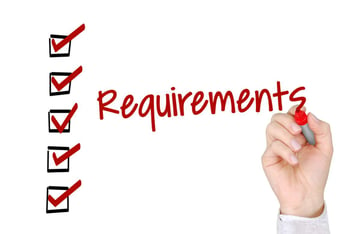The Importance of Documentation in Managing Virtual Team Members
Building a virtual team has become an effective strategy for adding skilled members to your workforce. Property management virtual assistants can offer numerous benefits, from handling administrative duties to coordinating maintenance tasks.
However, the key to leveraging these benefits lies in managing a virtual team effectively, and documentation plays a pivotal role in this process. One crucial aspect of good remote team management is documentation, but what does that mean, and what should property managers pull together to support their team's success?
We've got plenty of experience in this area, so keep reading for our best insights into using documentation to effectively manage virtual team members for better property management.
What Type of Documentation Do You Need?
The types of documentation required when managing remote team members must always be specific and organized. This can range from job descriptions and key performance indicators (KPIs) to a handbook outlining procedures, tools, and best practices.
Creating comprehensive documentation not only helps in managing remote team members more efficiently but also aids in onboarding new members smoothly. Here are a few must-haves for good documentation!
 Use Screenshots, Videos, and Documentation for Accountability
Use Screenshots, Videos, and Documentation for Accountability
When you add property management virtual assistants to your team to handle various tasks — be it administrative work, client communication, or data analysis — you inevitably introduce a distance factor that isn't present in traditional office settings.
This distance can sometimes lead to questions about accountability. How do you ensure your virtual assistant is completing their tasks effectively when they're miles away from you? The answer lies in comprehensive forms of documentation, such as screenshots, videos, and time-tracking records.
The Transparency of Screenshots
Screenshots serve as visual evidence of the work your virtual assistant is doing. This can be particularly useful when dealing with tasks that have multiple steps or require navigating through various software applications.
By asking your VA to provide periodic screenshots, you create a record of their activities. This holds them accountable for their assigned tasks and allows you to better understand their workflow. This information can be invaluable when managing a virtual team, as it aids in refining processes and eliminating any bottlenecks.
The Insightfulness of Videos
While screenshots offer a snapshot, videos can provide a full narrative. Videos are particularly useful for complex tasks that require a sequence of actions to complete.
A video recording of how your virtual assistant tackles a task provides a deeper insight into their efficiency and attention to detail. Additionally, videos can serve as an excellent training tool, offering real-life examples of how tasks should be completed for future reference or onboarding new virtual assistants.
A Priority-Focused Task List
Managing a virtual team involves more than just assigning tasks; it also requires prioritizing them based on their value and urgency.
While it's critical to have a clearly defined set of tasks for each team member, equally crucial is the act of prioritizing those tasks based on both their value to your business objectives and their urgency in terms of deadlines. This prioritization is not a one-time event but an ongoing process that requires strategic foresight and flexibility.
The Role of Prioritization in Task and Virtual Assistant Management
Tasks come in all shapes and sizes, each with its own set of requirements and impacts on your business. When managing a virtual team, you must continuously assess and rank tasks based on critical criteria such as importance, client expectations, and time sensitivity.
This process allows you to allocate resources more effectively, ensuring high-impact tasks don't fall by the wayside. It also helps your virtual assistants understand the bigger picture, enabling them to make better decisions when faced with conflicting demands on their time.
The Importance of a Well-Documented Strategy
It's equally vital to have a well-documented strategy outlining the procedures for task allocation, communication protocols, and performance benchmarks.
This documentation serves as a road map for the entire team, providing clarity and reducing uncertainties. It ensures that every team member, regardless of their location, is on the same page and working towards common goals.
This cohesive strategy is particularly valuable in maintaining a high level of performance and accountability across the team.
The Value of Being Prepared with a Roster
Another essential element in managing a virtual team is preparedness, which involves having contingency plans for various scenarios. One such contingency is having a roster of available virtual assistants who can step in when your primary VA is unavailable due to sickness, holidays, or other unforeseen circumstances.
In commercial or residential property management, where client demands and operational needs can change in a heartbeat, this roster acts as a safety net. It ensures you can quickly delegate tasks and keep your operations running smoothly, even when faced with unexpected challenges.
Time Tracking Tools
The concept of time is foundational to achieving efficiency, meeting deadlines, and optimizing workloads. However, the dynamics of time tracking shift quite significantly when you transition from a traditional office setting to managing a virtual team.
The absence of a physical presence can make it difficult to get a direct, real-time view of your team members' work habits, which is especially relevant when dealing with property management virtual assistants.
Challenges of Remote Time Tracking
One of the main challenges in remote settings is the potential for the blurring of boundaries between work hours and personal time. Without the structure provided by a physical office, there may be less clarity around when work begins and ends.
This lack of boundaries can lead to either underwork or overwork, both of which are detrimental in their own ways. Underwork could result in unmet deadlines and reduced productivity, while overwork could lead to burnout and decreased quality of work.
Innovative Techniques for Effective Monitoring
While remote work has challenges, technology provides solutions to help navigate them.
One such technique is the monitoring of email correspondences during off-hours. Checking when emails are sent and received can offer insights into your virtual assistant's work habits. For example, if you notice that most emails are sent outside standard working hours, it could indicate that your VA is overworked or has poor time management skills.
Either way, this awareness allows for corrective action, ensuring a more balanced and efficient work schedule.
Using Technology to Aid Time Management
In addition to email monitoring, numerous time-tracking software options are specifically designed for remote work settings. These tools can provide detailed reports of time spent on various tasks, allowing you and your virtual assistant to understand where most of the workday goes.
This analysis is invaluable for making data-driven decisions about redistributing workloads, setting more realistic deadlines, or identifying areas where efficiency could be improved.
Synchronized Work Hours for Better Efficiency
Another approach to time management with remote teams is synchronizing work hours, at least partially.
If your virtual assistant operates in a different time zone, having a few overlapping hours can make a world of difference in collaborative tasks and communication. It provides a window where real-time interaction is possible, thus aiding in clearer and quicker decision-making.
Defined Roles and Responsibilities
Documenting roles, tasks, and key performance indicators (KPIs) is an indispensable aspect of managing a virtual team effectively. This documentation serves as the blueprint that guides each team member's activities and provides a uniform standard against which performance can be evaluated.
When onboarding a new virtual assistant, involving them in creating a role-specific training manual is a best practice that serves multiple purposes. This engagement enables your new virtual contractor to fully understand their responsibilities that can be missed if they are simply handed a manual.
Additionally, the manual becomes a living document that can be referred to by any team member, eliminating ambiguities and providing a quick reference for what is expected in that role. It can also be invaluable for training new virtual assistants in the future, serving as a foundation that can be updated but never needs to be recreated from scratch.
Your Core Values and Company Culture
Incorporating your core values and company culture into the onboarding documentation and ongoing management of your property management virtual assistants is essential for achieving long-term success. Even though these team members work remotely, having a strong sense of your company's values and culture will enable them to make decisions and execute tasks that align with your organizational ethos.
This ensures operational consistency and fosters a sense of belonging and engagement, crucial elements for maintaining high levels of productivity and job satisfaction.
In other words, understanding the company's core values and culture is not an exclusive domain for in-house teams; it's a universal necessity that lays the foundation for a truly integrated, effective, and harmonious work environment.
Payments and Financial Documentation
Maintaining meticulous records of payments made to your virtual team is a non-negotiable aspect of effective management. These records are not only a legal requirement for tax reporting but also serve as an invaluable resource in the event of payment disputes.
Accurate financial documentation ensures transparency between you and each property management virtual assistant, thus fostering a sense of trust and mutual respect. Having this data readily available can also expedite the resolution process in the case of any misunderstandings or disagreements about compensation.
 Manage Successful Remote Teams With Excellent Documentation
Manage Successful Remote Teams With Excellent Documentation
Documentation is not just paperwork; it's the backbone of efficient remote team management, especially when team members are not co-located. Implementing a robust documentation strategy sets the stage for a streamlined, efficient, and harmonious virtual team.
When choosing property management virtual assistants through VPM Solutions, it's easy to find skilled VAs with industry experience, add them to your team, and manage them effectively through our Company Accounts feature. Property managers can easily see timesheets and payment records for each virtual assistant on the team.
To start building and managing virtual teams for your property management business, consider creating a Free Company Profile with VPM Solutions. We specialize in providing skilled virtual assistants for many roles, including marketing, maintenance coordination, leasing, and more.




















